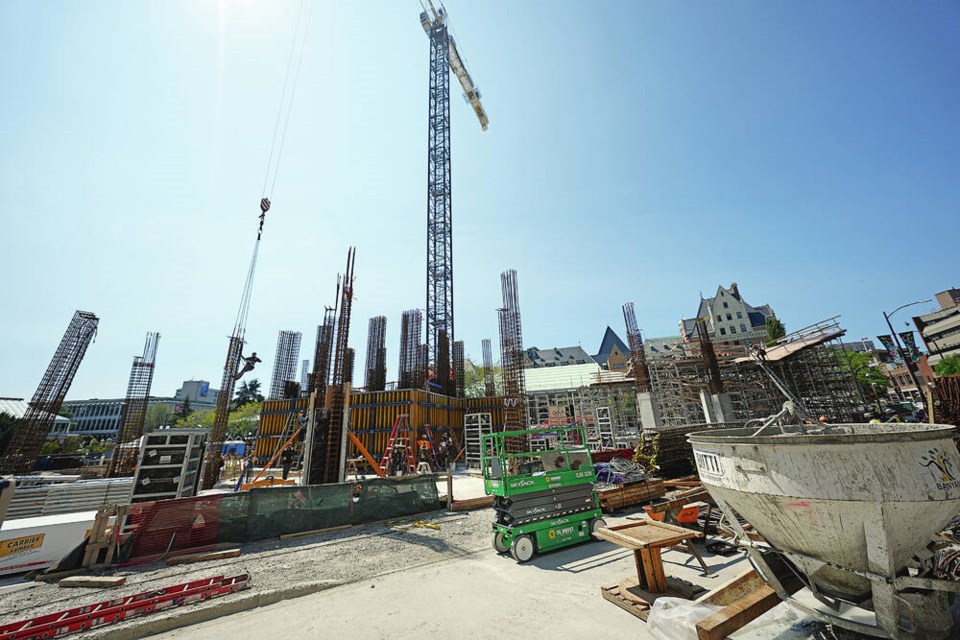B.C. was an outsized driver of Canada’s national increase in building permits in February. Permit issuances in the province jumped 22.7 per cent (up $477 million) to reach $2.6 billion. This was fuelled by a 143.6-per-cent increase in non-residential permits, which rose by $657.7 million. Major projects in the Vancouver census metropolitan area boosted commercial permits (up 127.3 per cent or $390 million) and institutional permits (up 231.9 per cent or $248.8 million). B.C.’s industrial category also experienced a gain with a 42.6-per-cent increase (up $18.9 million). This non-residential activity helped push Canadian building permits up by 2.9 per cent to reach $13.1 billion.
West Coast residential building permit issuances, however, moved in the other direction—with an 11-per-cent drop to $1.5 billion. Declines in multi-family housing permits—down 13.3 per cent or $185.5 million—caused the monthly dip. Single-dwelling permits increased by two per cent (up $4.9 million).
Year to date, permit issuances were up 6.1 per cent across the province. This said, wide monthly swings and modest nominal growth point to a weakening trend in real terms. Persistent supply shortages continue to clash with weak market conditions, high interest rates and challenges in the multi-family sector. As a weakening economic outlook and trade tensions fuel uncertainty, we expect to see tempered growth in permits in the coming months.
Most census metropolitan areas experienced an increase in building permit issuances in February. In Vancouver, total permits rose by 43.1 per cent from January. This was 42.1 per cent higher year over year. Nanaimo and Chilliwack both noted monthly increments of 32 per cent and 38.1 per cent, respectively. Permits also increased in Victoria by 11.2 per cent and in Kelowna by nine per cent. On the contrary, permits declined in Kamloops (down 8.4 per cent) and Abbotsford-Mission (down 32.4 per cent).
On the trade front, B.C. exports fell by 16.2 per cent or $824.7 million month to month in February, reversing a 6.5-per-cent increase in January. Unadjusted for seasonality, merchandise exports from the province were down by 1.5 per cent year over year. This was due to lower metal and non-metallic mineral products exports (down 19.8 per cent or $81.9 million). Forestry products and building and packaging materials exports fell by 8.2 per cent. In contrast, metal ores and non-metallic minerals exports increased by 31.5 per cent during the same period, while electronic and electrical equipment and parts exports rose by 17.7 per cent. Broad tariffs, additional aluminum tariffs and increased duties on lumber were not in effect, but trade has been influenced by the front-loading of imports by the U.S., which has impacted monthly patterns.
Imports to B.C. declined in February by 13.5 per cent or $863.6 million. On a 12-month basis, imports decreased by 11 per cent, as energy imports fell by 71.8 per cent ($374.9 million) and motor vehicles and parts imports dropped by 24.3 per cent ($205.2 million). In contrast, consumer goods imports increased by 4.1 per cent ($62.7 million).
Bryan Yu is chief economist at Central 1.





